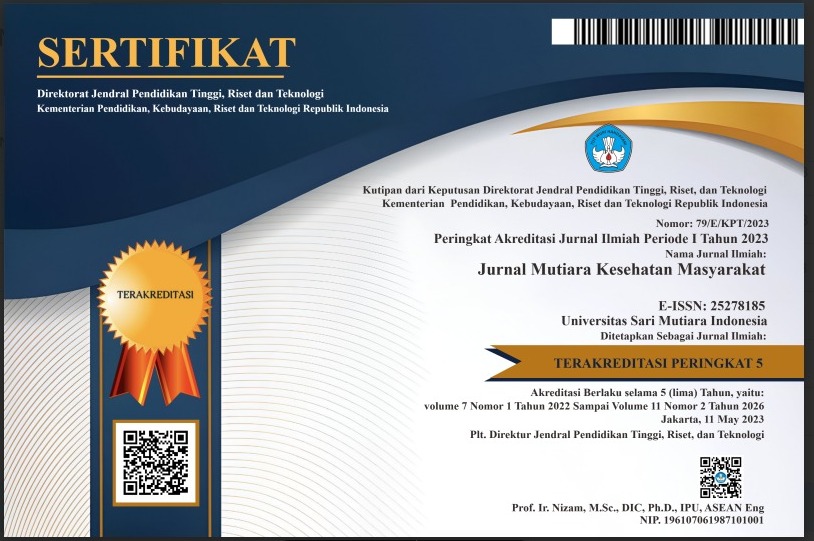A Change to Improve Health Quality: Benefits of the Human Opportunity Index (HOI)
Keywords:
HOI, Health, Housing, West Sumatra, EqualityAbstract
There are a number of faktors that cannot be chosen by a child, such as gender, place of residence, number of family members, sex of the head of the household, the work status of the head of the household, the education of the head of the household, and the income per capita of the head of the household. HOI shows the access of a child in West Sumatra in 2019 to basic needs such as safe water, proper sanitation, proper housing and electricity. Clean water has covered 79.67 percent, of which 7.14 percent of the opportunity needs to be allocated to ensure equality in 2019. Proper sanitation, coverage has been 61.04 percent with reallocation of opportunities to ensure equity in 2019 of 10.88 percent. Furthermore, houses worthy of new coverage are 47.02 percent and opportunities that need to be reallocated to ensure equality in 2019 are 16.73 percent. Meanwhile, access to electricity coverage has been very good, 98.74 percent and reallocation of opportunities is only 0.76 percent. The most influential faktors are the income per capita and the education of the head of the household. Thus increasing the coverage and equity of this problem will require not only direct government assistance interventions such as housing assistance but also campaigns on all necessary accesses. This is one of the benefits of this research in mapping the problems that occur and efforts to improve them.
Downloads
References
2. Mahendra IT. Peran Media Sosial Instagram Dalam Pembentukan Kepribadian Remaja Usia 12-17 Tahun di Kelurahan Kebalen Kecamatan Babelan Kabupaten Bekasi (Skripsi).Jakarta: Fakultas Ilmu Tarbiyah dan Keguruan Universitas Islam Negeri Syarif Hidayatullah; 2017. (cited September 15). Available from: http://repository.uinjkt.ac.id/dspace/bitstream/123456789/34490/1/Ikhsan%20Tila%20Mahendra-FITK
3. Indra. Empat Kajian Tentang: Polarisasi, Ketimpangan, dan Konflik Sosial di Indonesia. 2015. Disertasi. Depok: Fakultas Ekonomi dan Budaya Universitas Indonesia; 2015.
4. Matre, V.C. The Human Opportunity Index and Income Inequality in Brazil. (2012). Thesis in partial fulfillment of the requirements for the degree Bachelor of Science in International Business. Sam M. Walton College of Business University of Arkansas Fayetteville, Arkansas. https://core.ac.uk/download/pdf/72840766.pdf.
5. Madheswaran, S. Vani, B.P. Inequalities of Human Opportunities in India: A State-level Analysis. 2018. (cited 2020 September 15). Indian Journal of Human Development 12(2). 1-17. Available from: http://journals.sagepub.com/home/jhd.
6. Coley, R.J (2013).Poverty and Education: Finding the Way Forward. Educational Testing Service Bruce Baker Rutgers University. July 2013 ETS Center for Research on Human Capital and Education Research and Development Educational Testing Service. https://www.ets.org/s/research/pdf/poverty_and_education_report.pdf.
7. BPS. Pedoman Pencacahan Susenas.2019.
8. Zulkifli A, Rahmat KB, dan Ruhban A. Analisis Hubungan Kualitas Air Minum Dan Kejadian Diare Di Wawondula Sebagai Wilayah Pemberdayaan PT. Vale Sorowako. Jurnal poltekkes-MKS. 2017.(cited 2020 Oktober 20) 12 (01). Availabe from: http://journal.poltekkes-mks.ac.id/ojs2/index.php/mediakesehatan/article/view/128/155
9. Zahtamal, Chandra F, Restila R, Restuastuti T. Perilaku Buang Air Besar Anak Usia Sekolah Dasar Yang Tinggal Di Sepanjang Aliran Sungai Kampar Provinsi Riau. Jurnal Kesehatan Lingkungan. 2020 (cite 2020 November 10); 12 (2). https://E-Journal.Unair.Ac.Id/Jkl/Article/Download/16089/10186 · Pdf File
10. Sukowinarsih TE, Cahyati WH. Hubungan Sanitasi Rumah Dengan Angka Bebas Jentik Aedes Aegypti. Jurnal Kesehatan Masyarakat. 2010. (cited 2020 Oktober 20); 6 (1). available from: http://journal.unnes.ac.id/index.php/kemas Jurusan Ilmu Kesehatan Masyarakat, Fakultas Ilmu Keolahragaan, Universitas Negeri Semarang, Indonesia
11. Soeracmad Y. Hubungan Sanitasi Lingkungan Rumah Tangga Dengan Kejadian Stunting Pada Anak Balita Di Puskesmas Wonomulyo Kabupaten Polewali Mandar Tahun 2019. Jurnal Kesehatan Masyarakat. 2019. (cited 2020 Oktober 9); 5(2). Available from: https://journal.lppm-unasman.ac.id/index.php/jikm/article/view/519
12. Sahadewa S, Eufemia E, Edwin E, Niluh N, Shita S. Hubungan Tingkat Pencahayaan, Kelembaban Udara, Dan Ventilasi Udara Dengan Faktor Risiko Kejadian Tb Paru Bta Positif Di Desa Jatikalang Kecamatan Krian Kabupaten Sidoarjo. Jurnal ilmu kedokteran. 2019 (cited 2020 Oktober 11);8 (2). Available from: https://journal.uwks.ac.id/index.php/jikw/article/view/617/0
13. Ginanjar A. Analisis dalam Implementasi Kebijakan Program Bedah Rumah di Kota Tangerang. Jurnal of Government and Civil Society.2019 (cited 2020 November 9); 3 (2). Available from: http://jurnal.umt.ac.id/index.php/jgs/article/view/1816
14. Budiwati TRA, Yuliana T, Agustina, Nurdiantami Y. Pengaruh Sosialisasi Gerakan Masyarakat Hidup Sehat Terhadap Perilaku Konsumsi Buah Dan Sayur Pada Remaja. Jurnal Ilmiah Kesehatan masyarakat. 2020. (cited 2020 november 8). 12 (2). Available from: https://jikm.upnvj.ac.id/index.php/home/article/view/40
15. Haliq AIS. Pemanfaatan Media Sosial Untuk Mengampanyekan
Program Listrik Pintar Di Pt. Pln (Persero) Wilayah
Sulselrabar. Jurnal Komunikasi KAREBA. 2018. (cited 2020 november 9). 7 (2). Available from:
ttps://journal.unhas.ac.id/index.php/kareba/article/download/7352/4020









 This work is licensed under a
This work is licensed under a 



.png)



